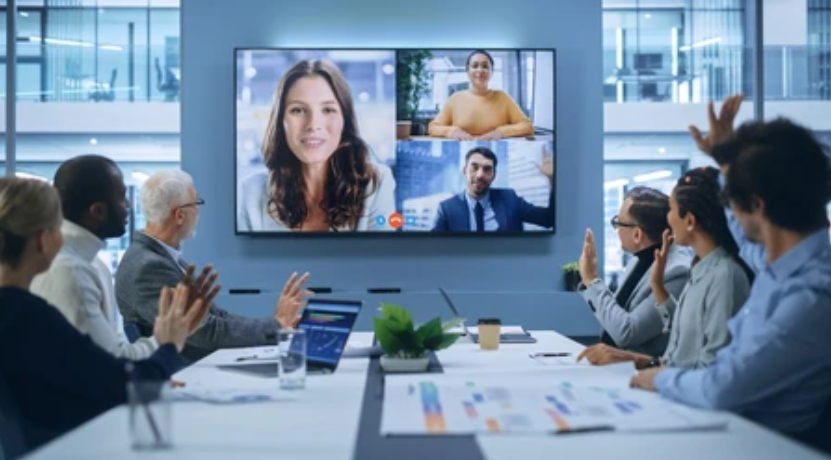The Best Practices For Microsoft Teams Hybrid Meetings
Microsoft Teams Monitoring
Bad meetings in the age of hybrid aren’t just annoying, they’re a huge cost sink. They drop productivity, reduce employee happiness, and sometimes, in the worst cases, lead to missed business opportunities. All that can be avoided with the right approach to making hybrid work the right way. Here are the best practices for Teams hybrid meetings that you need to know.
Teams Hybrid Meetings Best Practices
When participating in a hybrid meeting, it’s important to leverage technology to bridge the gap between in-room and remote attendees. Start by having all attendees join the meeting from their own devices, even if they’re physically present in the meeting room. This approach allows you them turn on your camera and actively engage with the meeting chat.
Make sure cameras are on during the meeting – we can’t stress this enough. This simple action helps remote participants connect with who is speaking and helps the speaker by giving them visual feedback on what they’re saying, which is a really important part of social interaction that’s missing with a camera. It’s so much easier to build rapport when people can see each other.
Audio clarity is vital in hybrid meetings. Always double-check that microphones are muted for anyone joining the meeting remotely as well as speakers muted for those in the meeting room itself. This prevents the classic echo and feedback that we’ve all come to dread when joining calls.

Be consciously inclusive of remote attendees by making an effort to include remote participants in the conversation, giving them ample opportunities to contribute. Conversely, minimize in-room side discussions and background noise to help anyone dialing in keep up with the conversation as well as feel more a part of what is going on – no one likes to think they’re missing out on something. That means if there is a conversation likely to develop in the room, add it to the chat as a point of order that the person leading the meeting can loop back to when appropriate.
And, one final point please, please, please, encourage people to ‘raise their hand’ in Teams. There’s nothing worse than being spoken over whether you’re the speaker or another attendee who then can’t keep up with the conversation.
Friction Costs
Digital friction, whether remote or in-office, can significantly hurt the efficiency and cost-effectiveness of enterprises. This is the friction you’ll get on top of not following the best practices we’ve just covered. Common issues like poor audio and video quality, along with difficulty sharing content, are a big deal for hybrid setups. Understanding and addressing these sources of digital friction are crucial, especially since they significantly impact business operations if left unchecked.
The digital hurdles of running hybrid meetings (poor audio and video quality leading the way) are a huge deal, with 46% of enterprises experiencing decreased efficiency, 43% facing increased costs, and 40% suffering from a decline in employee satisfaction. These problems predominantly occur in Teams when a close enough eye isn’t kept on quality.
So, what’s the solution? Vantage DX from Martello.
It’s the perfect tool to support hybrid meeting best practices because it finally gives your business the oversight it needs to properly monitor the quality of the Teams experience.
Offering 24×7 end-to-end Teams performance monitoring, your IT team will know the second audio or video quality drops, so they can get it fixed, get a meeting back on track, and make sure that everyone who has attended gets the most out of it.
Want the best tool for making Teams the perfect hybrid meeting platform? You need Vantage DX from Martello – it’s really that simple.


